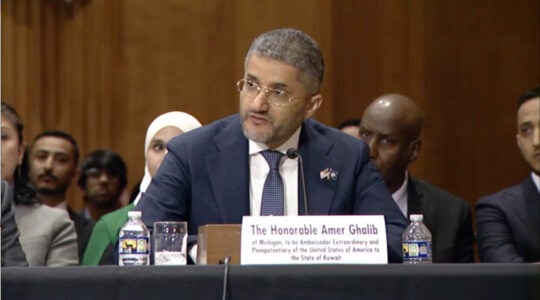I’m here at the Jewish Funders Network Conference in St. Petersburg, Fla., for the next couple of days. The conference this year is focused on innovation — social entrepreneurs and the like. It almost in a sense feels like one big dare to the funders here to fund outside-of-the-box projects.
One could question whether that is the right approach to take during a recession, when funds are tight and traditional charitable projects are seeing an increase in need and demand for services.
I’ll let you make that call.
Feel free to check me out on Twitter, where I’ve been tweeting like mad on this shindig. There are about 60 tweets online from last night’s opening plenary, a forum discussion with four social entrepreneurs. I swear it’s a good read. How could listening to four people talk each other in circles not be entertaining?
Just sat through a session on leveraging and how philanthropists can work with their peers to better fund their projects. The panelists include Guidestar Ceo Bob Ottenhoff, Evan Schlessinger, the director of the Los Angeles Venture Philanthropy Fund, and Jed Emerson, the managing director for Integrated Capital Performance for Uhuru Capital Management.
Schlessinger, who has raised some $2 million for innovative projects, has had some pretty good tidbits: When looking at projects to fund, he looks at four factors — a solid idea, impact, scalability and sustainability. Sustainability is the key, though. Most often he receives RFPs from organizations that can explain for pages why their ideas are important and innovative and the next big idea — but only a few lines about how they are sustainable.
Ideas are a dime a dozen, he said: “We haven’t had a new idea since donate your car to charity,” he said.
Ottenhoff later agreed that sustainability is key. Every nonprofit should ask itself why it is trying to raise money if it does not have a sustainable model, he said.
Schlessinger gave a couple of suggestions for sustainable models. For one, have a diversified board. A board of nine lawyers will not be able to solve every problem a nonprofit will encounter. “You can’t win a baseball game with nine pitchers,” he said.
Also, he said, engage potential donors in actual work with the nonprofit. Ask them for hands on work on a project. Then ask them for money.
But, said Lucy Bernholz, the panel’s moderator and the president of Blueprint Research and Design, asking for money from foundations for the duration of an organization’s life is not a sustainable model.
“If your model for sustainability is who is the next foundation to fund this, that is not a sustainable model,” Bernholz said. “What starts an organization is not what sustains it.”
JTA has documented Jewish history in real-time for over a century. Keep our journalism strong by joining us in supporting independent, award-winning reporting.





